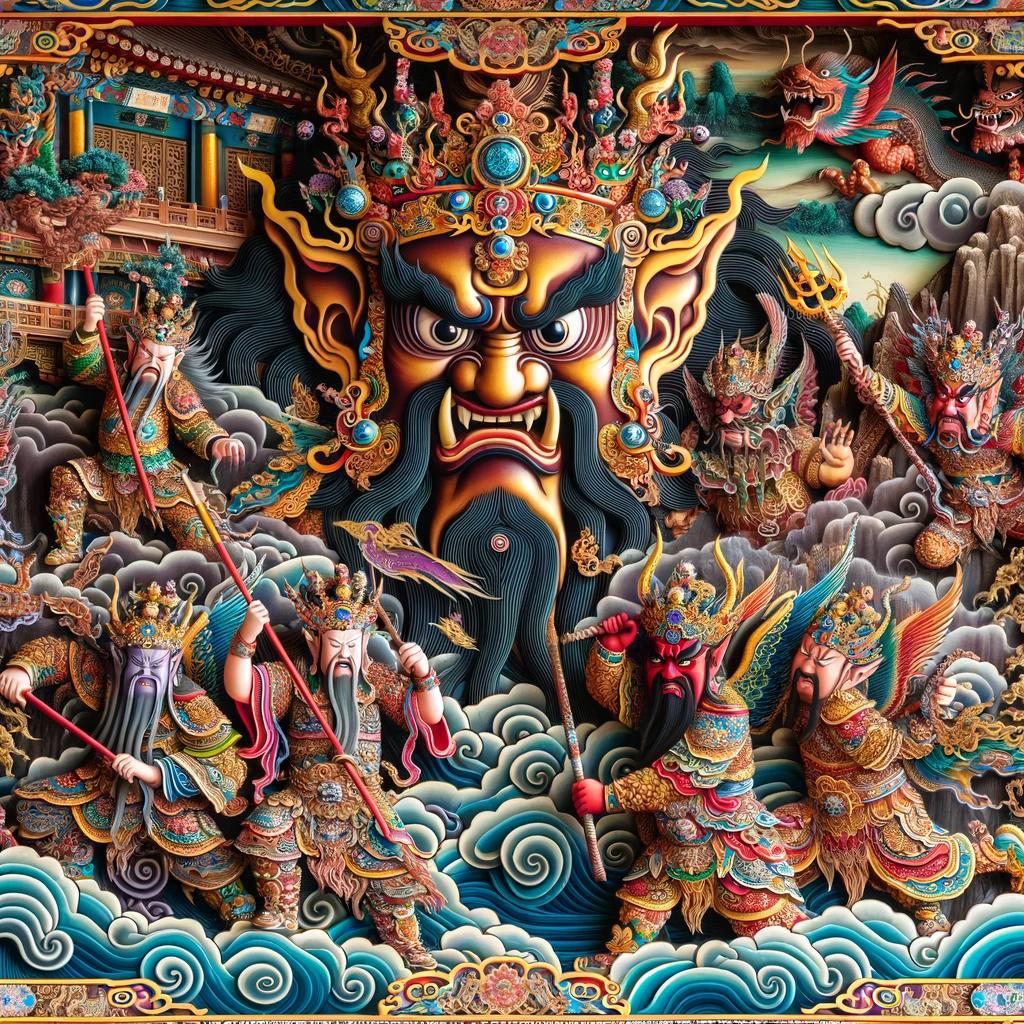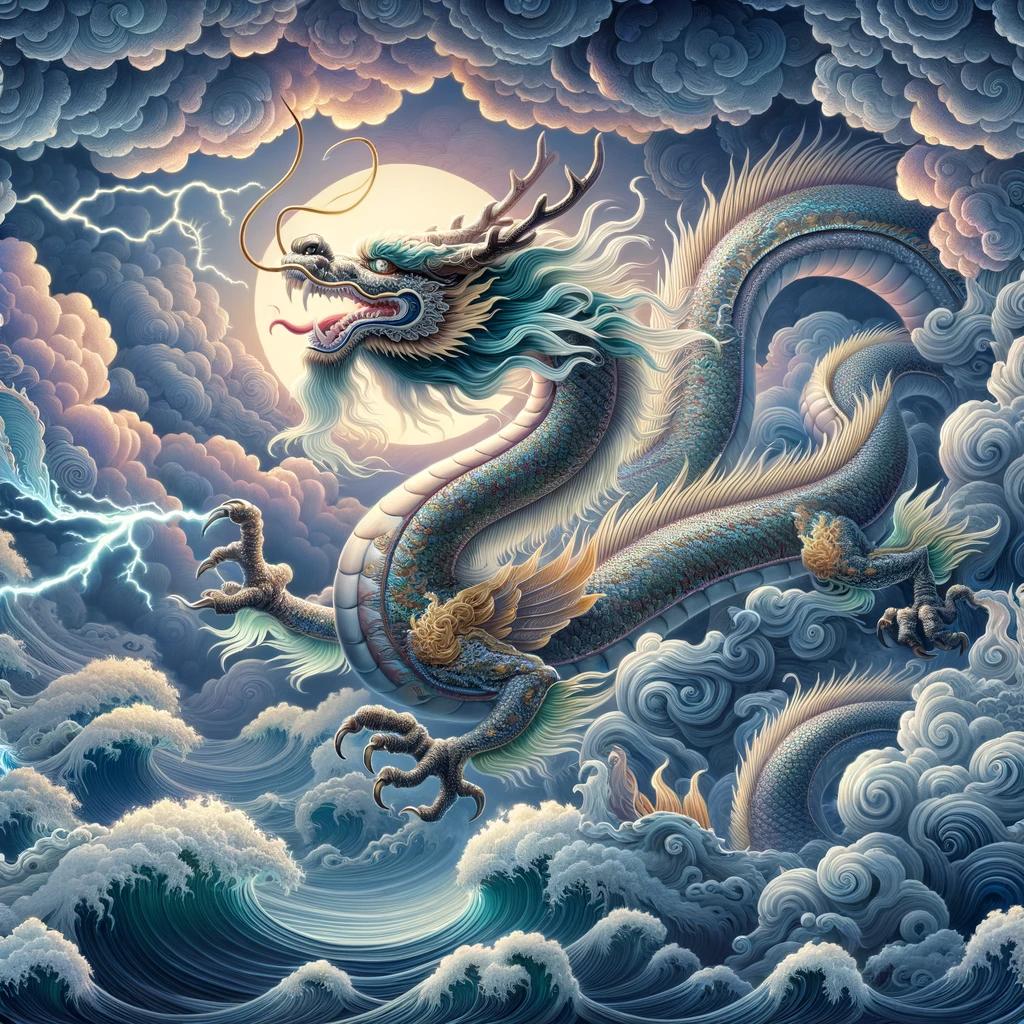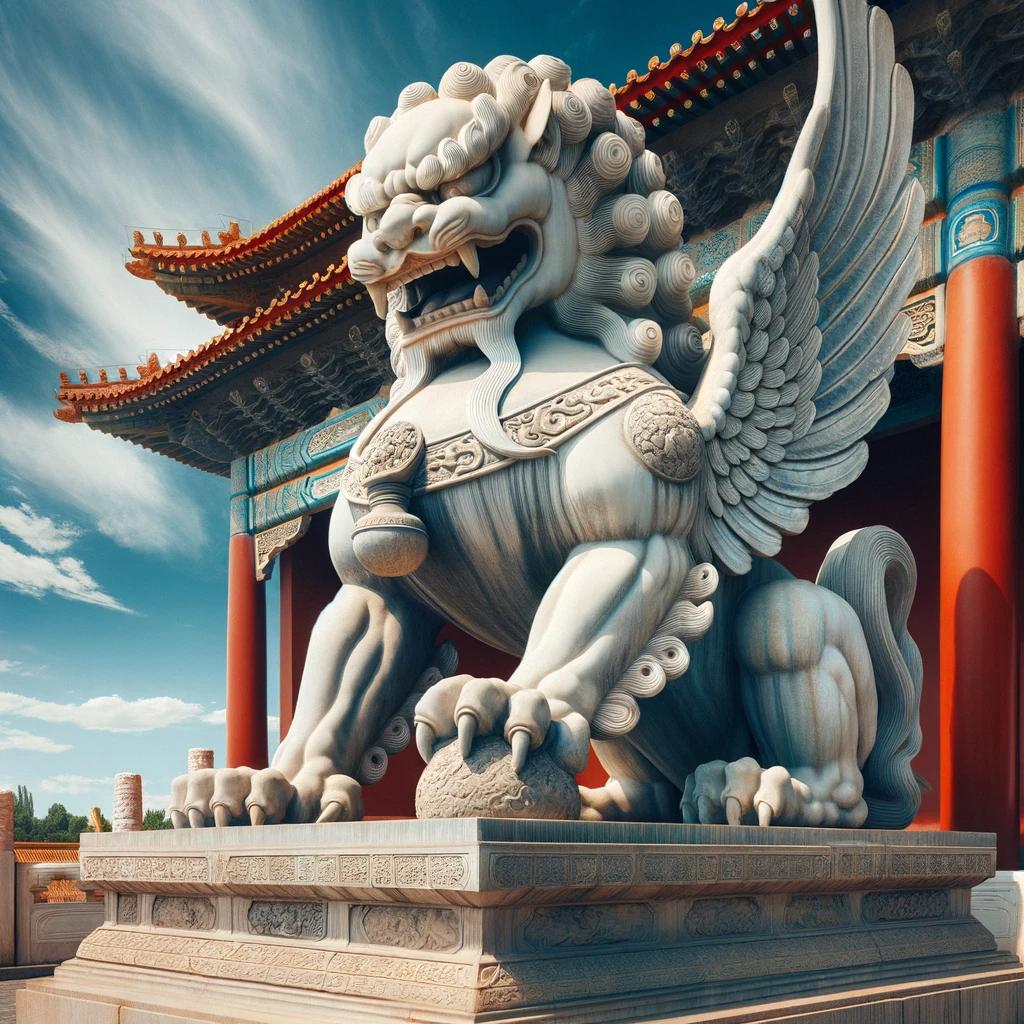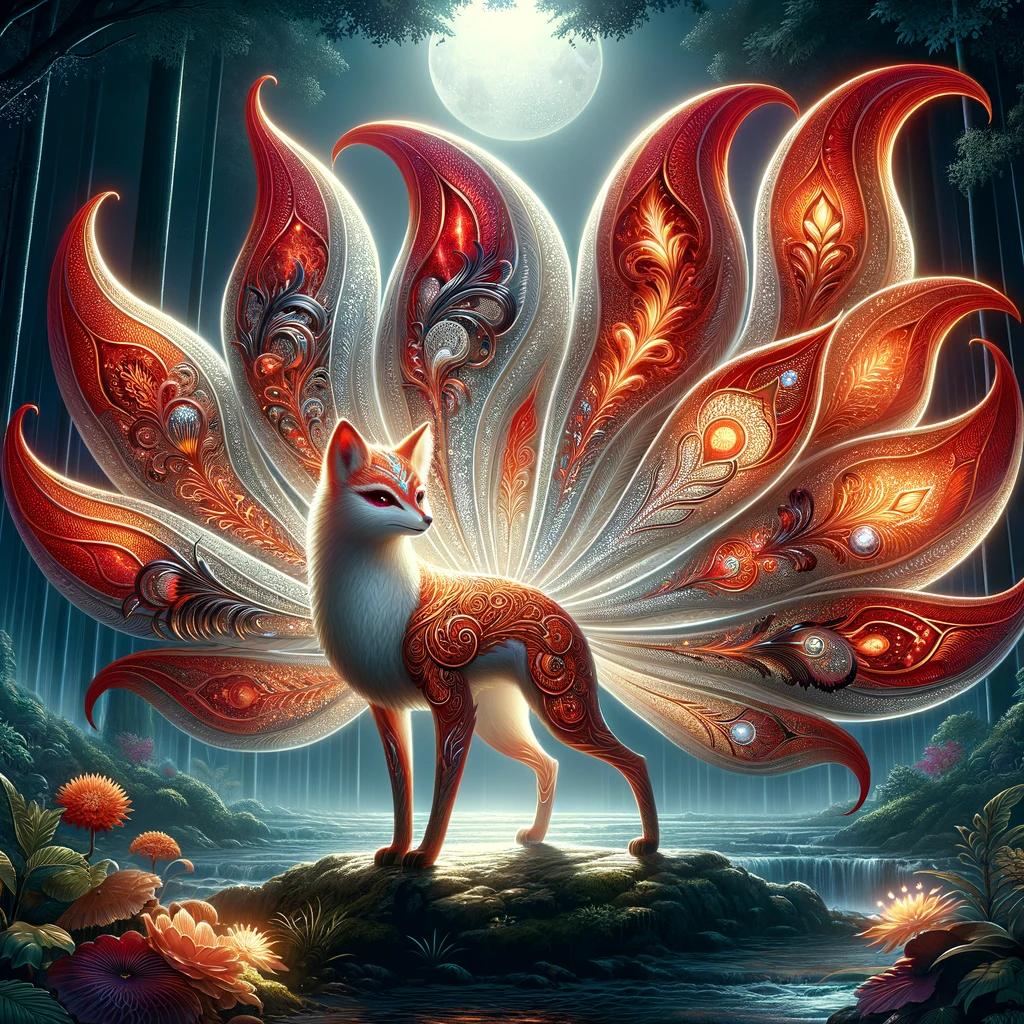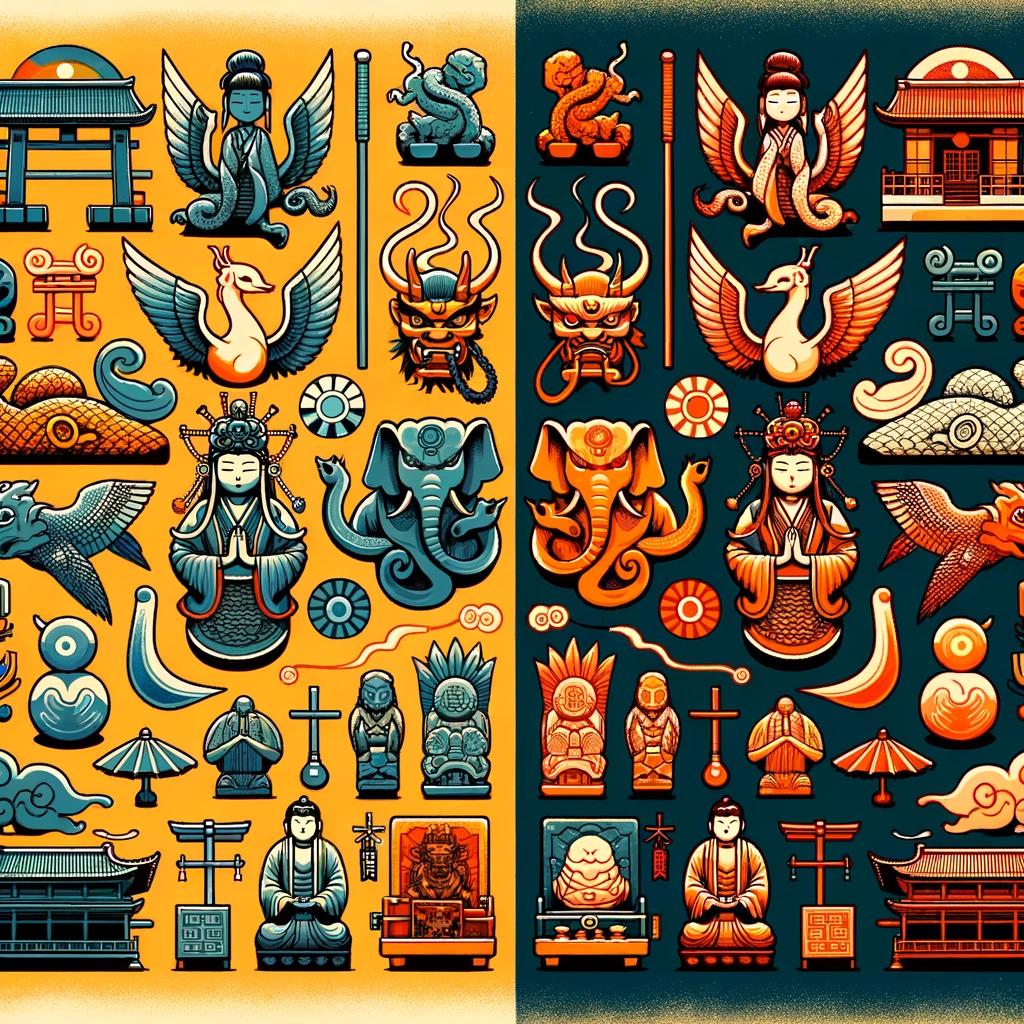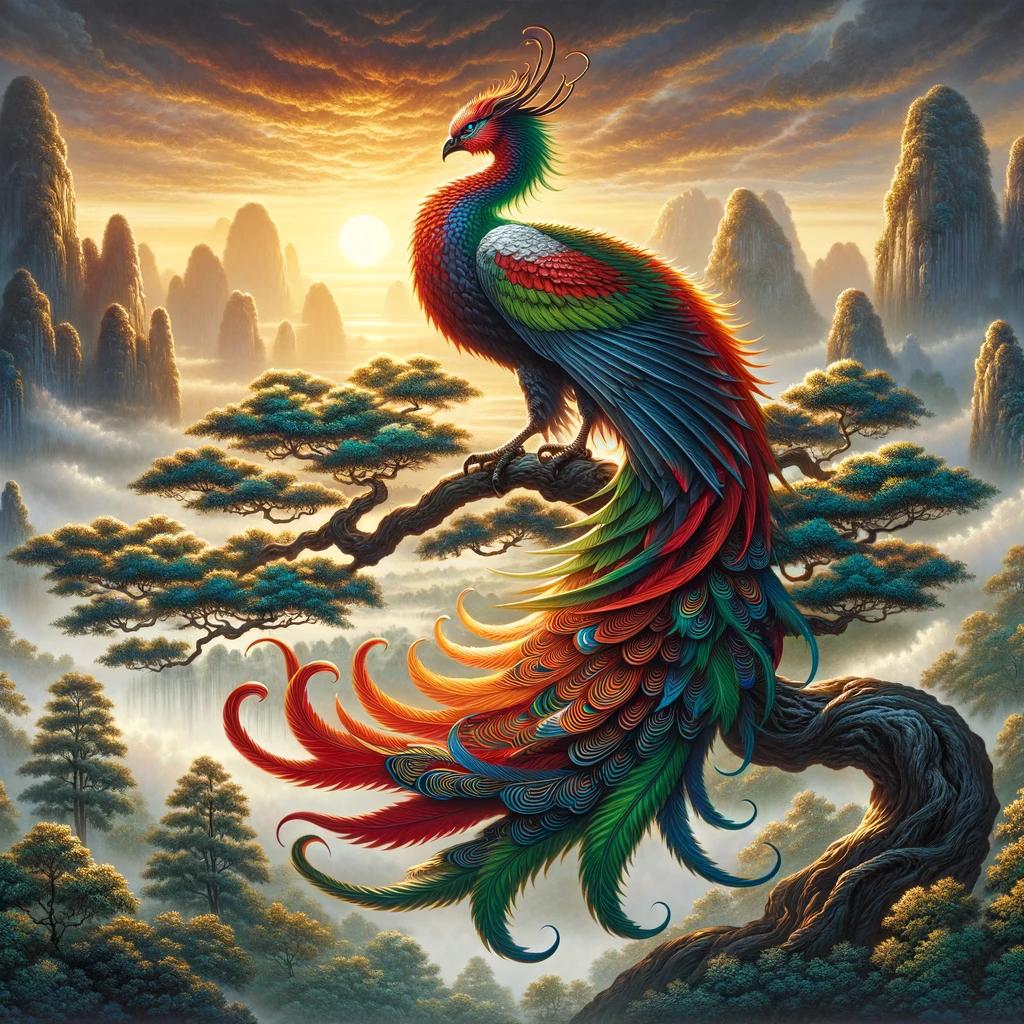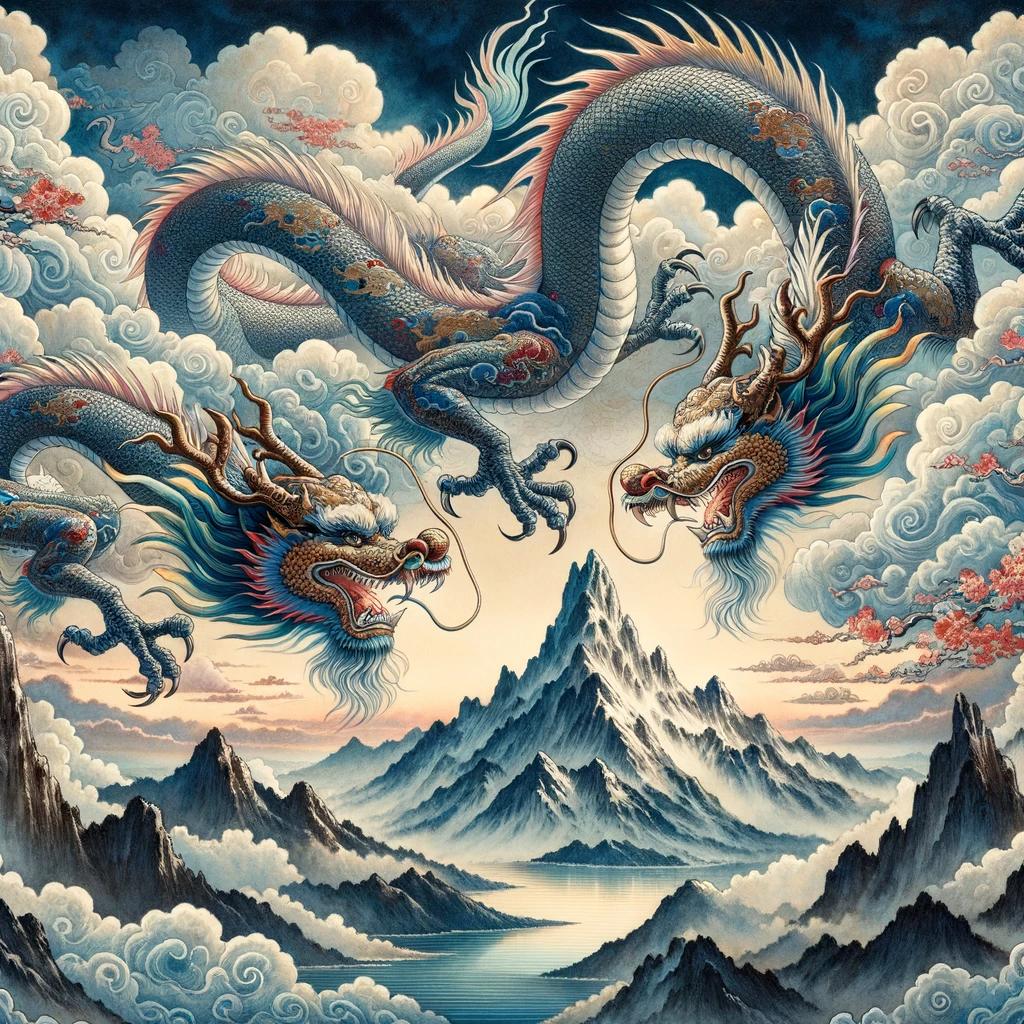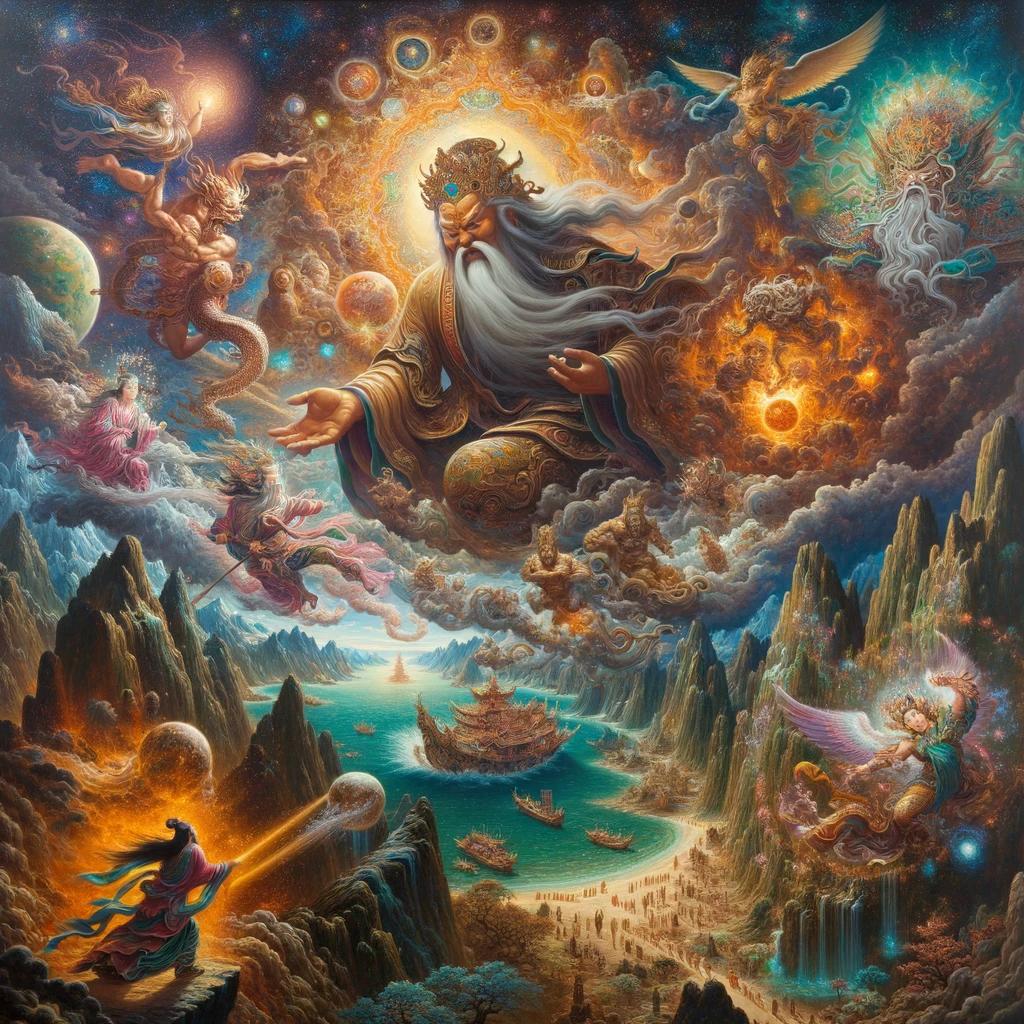Chinese Mythology Creatures: Exploring the Enchanting Beings of Chinese Folklore
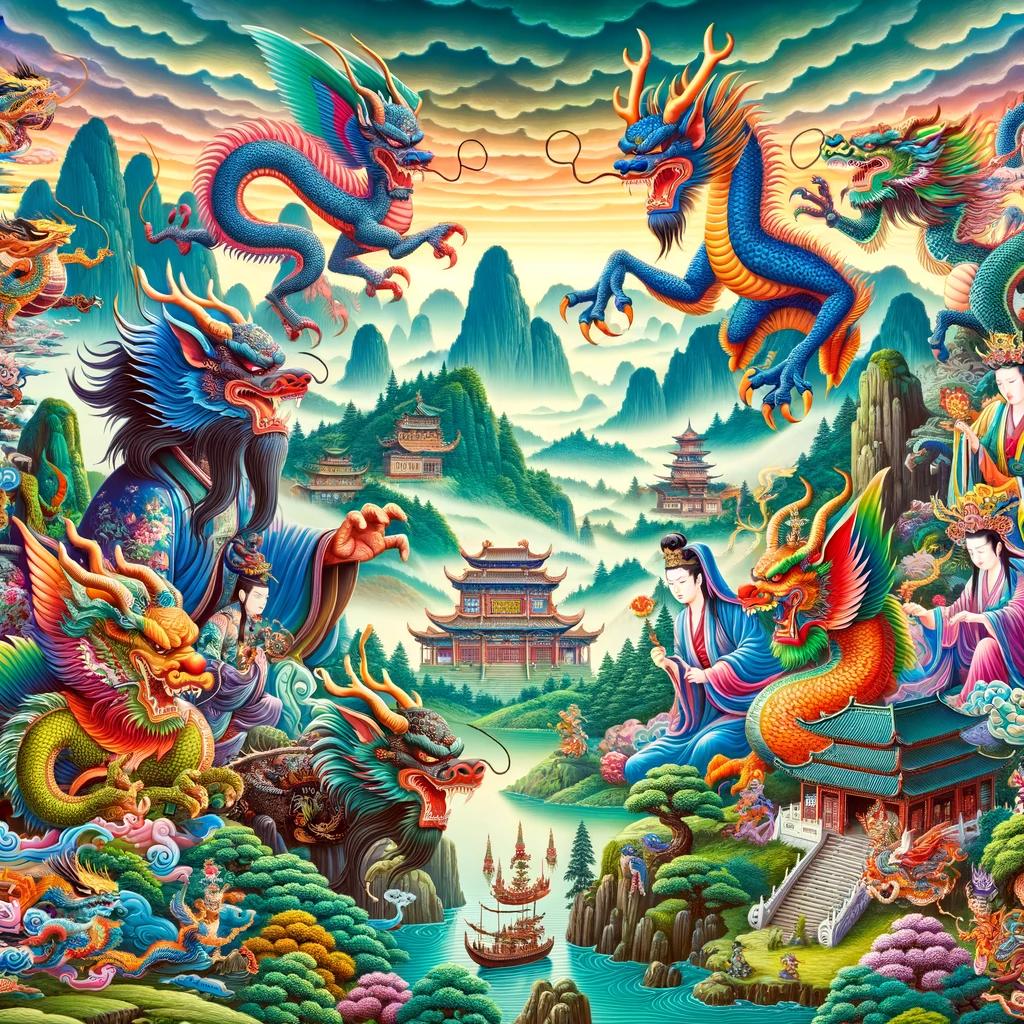
Chinese Mythology Creatures have captivated the imagination of people for centuries. From the mighty Dragon to the elusive Fox Spirit, these mythical beings hold significant symbolism in Chinese folklore.
Discover the awe-inspiring tales of the Four Symbols, the mystical Qilin, and the legendary Nian. Dive into the realm of Chinese Mythology Creatures as we explore their cultural significance in art, literature, movies, and video games.
Immerse yourself in the rich heritage of China and unravel the mysteries of these enchanting creatures.
Chinese Mythology Gods and Their Creatures
Chinese mythology is filled with a rich tapestry of gods and creatures that are deeply rooted in ancient folklore and traditions. These mythical beings hold great significance in Chinese culture, representing various aspects of life, nature, and spirituality.
Let’s explore some of the most fascinating creatures that are intertwined with the Chinese pantheon of gods.
The Dragon: Symbolism and Legends
The Dragon is perhaps one of the most iconic creatures in Chinese mythology. It is revered as a symbol of power, strength, and good fortune. In Chinese folklore, dragons are often depicted as benevolent creatures with the ability to control rain, rivers, and the sea.
They are also believed to bring prosperity and protection. Numerous legends and tales narrate their heroic feats, such as battling evil forces and bestowing blessings upon the people.
The Four Symbols: Azure Dragon, White Tiger, Vermilion Bird, Black Tortoise
The Four Symbols, also known as the Four Heavenly Beasts, play a celestial role in Chinese mythology.
Each representing a cardinal direction and a season, these mythical creatures include the Azure Dragon of the East, the White Tiger of the West, the Vermilion Bird of the South, and the Black Tortoise of the North.
They are believed to govern specific elements of nature, embodying virtues and embodying the balance of yin and yang.
The Nine-Headed Bird: Mythical Creature with Multiple Meanings
The Nine-Headed Bird, also known as the Jiǔwěi, is a mythical creature that holds different meanings in Chinese mythology. Often depicted as a bird with nine heads, it is associated with concepts such as longevity, immortality, and rebirth.
This mystical creature is believed to bring good luck and fortune to those who encounter it. Its symbolism varies across different regions, but it consistently represents auspiciousness and spiritual transcendence.
The Fox Spirit: Shapeshifting and Deception
The Fox Spirit, known as Hu Li Jing, is a captivating creature in Chinese mythology.
This shape-shifting entity is often depicted as a beautiful woman with nine tails, possessing supernatural powers and intelligence. While the Fox Spirit is known for its cunning and mischief, it is also associated with protection and guidance.
Tales of encounters with the Fox Spirit often revolve around themes of love, seduction, and ultimate wisdom.
Chinese Mythical Creatures in Folklore
Chinese Mythical Creatures have played a significant role in Chinese folklore, embodying various cultural beliefs and values. From the legendary Guardian Lions to the mystical Qilin, these creatures have captivated the imaginations of people for generations.
Let’s explore some of the fascinating mythical beings in Chinese folklore.
The Guardian Lions: Protectors of Chinese Traditions
The Guardian Lions, also known as Shi, are iconic figures in Chinese culture. These majestic creatures are often portrayed in pairs and placed as guardians at the entrances of temples, palaces, and homes.
They are believed to have the power to ward off evil spirits and bring good fortune. With their bold and noble presence, the Guardian Lions symbolize protection and the preservation of Chinese traditions.
The Qilin: A Mystical Creature of Good Fortune
The Qilin, sometimes referred to as the Chinese Unicorn, is a mythical creature known for its benevolence and association with good fortune. It is often depicted as a majestic creature with attributes resembling various animals, such as the hooves of a deer, the body of a horse, and the tail of an ox.
The Qilin is believed to bring blessings, prosperity, and harmony wherever it appears. It holds a special place in Chinese mythology as a symbol of wisdom and righteousness.
The Fenghuang: A Divine Bird of the Chinese Culture
The Fenghuang, also known as the Chinese Phoenix, is a mythical bird of great significance in Chinese culture. Unlike its Western counterpart, the Fenghuang is often portrayed as a combination of different birds, including the head of a golden pheasant, the body of a mandarin duck, the tail of a peacock, and the wings of a swan.
Considered a symbol of virtue, grace, and prosperity, the Fenghuang represents the union of Yin and Yang and is associated with the empress and feminine power in Chinese mythology.
The Dragon King: Ruler of the Seas
The Dragon King, also known as Long Wang, is a legendary figure in Chinese mythology who governs the seas and controls the weather. Depicted as a powerful dragon with the ability to transform its size, the Dragon King is respected and revered by fishermen, sailors, and those whose lives depend on the vast waters.
Chinese folklore is filled with stories of the Dragon King’s interactions with humans, sometimes bringing blessings and protection, and other times causing storms or tidal waves. The Dragon King represents the unpredictable yet mighty forces of nature.
Famous Chinese Mythical Creatures
The Nian: A Legendary Beast of the New Year
The Nian is a fearsome creature from Chinese mythology, known for its ferocity and association with the lunar New Year celebrations. According to legends, the Nian would terrorize villages, devouring livestock and even threatening human lives.
To ward off the Nian’s attacks, the people started using red decorations, firecrackers, and the loud beating of drums to scare the beast away. This tradition continues to this day during the festive celebrations of the Chinese New Year.
The Huli Jing: A Clever and Mischievous Fox Spirit
In Chinese folklore, the Huli Jing is a fox spirit known for its intelligence and shape-shifting abilities. Often portrayed as beautiful women, Huli Jing can be benevolent or mischievous, depending on their interactions with humans.
They are associated with illusions, seduction, and bewitching charms. In folklore, encounters with Huli Jing often lead to fascinating and sometimes dangerous adventures.
The Pixiu: Mythical Creature of Wealth and Prosperity
The Pixiu, also known as Pi Yao or Tian Lu, is a mythical creature that brings good luck, wealth, and prosperity.
It has the body of a lion and the wings of a dragon, symbolizing its protective and auspicious nature. In Chinese culture, Pixiu is believed to gather wealth and prevent financial losses.
People often display statues or images of Pixiu in homes and businesses to attract good fortune and abundance.
The Zhulong: The Divine Dragon with a Human Body
The Zhulong, also known as the Torch Dragon, is a prominent figure in Chinese mythology. It is depicted as a celestial dragon with a human-like body, blazing with light and fire.
Legends tell of the Zhulong’s immense power and its association with the sun, controlling the passing of day and night. Worshiped as a divine creature, the Zhulong represents energy, transformation, and enlightenment in Chinese mythology.
- The Nian is a legendary beast associated with the lunar New Year celebrations.
- The Huli Jing is a shape-shifting fox spirit known for its intelligence and charm.
- The Pixiu is a mythical creature that brings good luck and wealth.
- The Zhulong is a divine dragon with a human-like body and represents power and enlightenment.
Chinese Mythology Creatures in Popular Culture
Welcome to the fascinating world of Chinese Mythology Creatures in popular culture. These mythical beings have captured the imagination of audiences around the globe, appearing in various forms of entertainment. Let’s explore how they have made their mark in movies, TV shows, video games, literature, and art.
Chinese Mythology Creatures in Movies and TV Shows
Movies and TV shows have brought Chinese Mythology Creatures to life, showcasing their awe-inspiring abilities and captivating stories. From iconic films like “Crouching Tiger, Hidden Dragon” to popular TV series like “Legend of the White Snake,” these creatures have become beloved characters, enthralling audiences with their supernatural powers and mythical adventures.
Chinese Mythology Creatures in Video Games
Video games have provided immersive platforms for exploring the world of Chinese Mythology Creatures. Players can encounter these fascinating beings while embarking on epic quests or engaging in battles. Games such as “Jade Empire” and “Gods and Monsters” allow gamers to interact with creatures like the powerful Dragon or the mischievous Fox Spirit, adding a touch of mythical wonder to the gaming experience.
Chinese Mythology Creatures in Literature and Art
Literature and art have long been mediums through which Chinese Mythology Creatures are celebrated. Numerous books, poems, and graphic novels have been dedicated to exploring their stories and symbolism. Artists have also depicted these creatures in paintings, sculptures, and other visual art forms, capturing their ethereal beauty and cultural significance.
Experience the enchantment of Chinese Mythology Creatures as they take center stage in popular culture. Whether you’re watching a thrilling movie, immersing yourself in a video game, or appreciating their portrayal in literature and art, these mythical beings continue to captivate and inspire audiences in the modern world.
The rich and diverse world of Chinese Mythology Creatures holds immense significance and has left an indelible impact on Chinese culture and beyond. These mythical beings are not only captivating figures from ancient tales but have also become symbols of power, fortune, protection, and wisdom, continuing to influence various aspects of modern society.
Let us explore the profound impact and enduring legacy of Chinese Mythology Creatures.
Impact and Legacy of Chinese Mythology Creatures
Chinese Mythology Creatures have influenced multiple areas, including literature, art, architecture, and even the entertainment industry. Tales of dragons, phoenixes, and other legendary creatures have inspired countless works of literature, providing themes of courage, justice, and the quest for knowledge.
Their iconic imagery serves as a rich source of inspiration for artists, with their depictions found in traditional paintings, sculptures, and intricate artwork.
Moreover, these mythical beings have marked their presence in the architecture of temples, palaces, and shrines, acting as guardians and symbols of divine protection.
They continue to be revered in various rituals and ceremonies, symbolizing prosperity, good luck, and warding off evil spirits.
The legacy of Chinese Mythology Creatures extends beyond the borders of China.
Their influence can be seen in the popular culture of many countries, with films, TV shows, and video games incorporating their enchanting tales and mystical beings. Their enduring popularity showcases their universal appeal and the timeless allure of Chinese mythology.
Appreciating the Rich Mythical Heritage of China
Exploring the world of Chinese Mythology Creatures allows us to appreciate the rich mythical heritage of China. These fascinating beings represent the imagination, beliefs, and cultural values of ancient Chinese civilization.
By delving into their stories, we gain insight into the Chinese people’s deep connection with nature, their reverence for celestial beings, and their desire for harmony and balance.
- The mythical creatures of China embody various virtues and qualities, serving as role models for individuals in their quest for personal growth, courage, and wisdom.
- Their depiction in art and literature showcases the creativity and artistic prowess of Chinese civilization throughout history.
- Their symbolic significance in architecture and traditions reinforces the importance of cultural preservation and the legacy of ancestral wisdom.
Appreciating the rich mythical heritage of China allows us to connect with ancient traditions, grasp the profound meanings behind these creatures, and gain a deeper understanding of the cultural tapestry woven by Chinese mythology.
.












